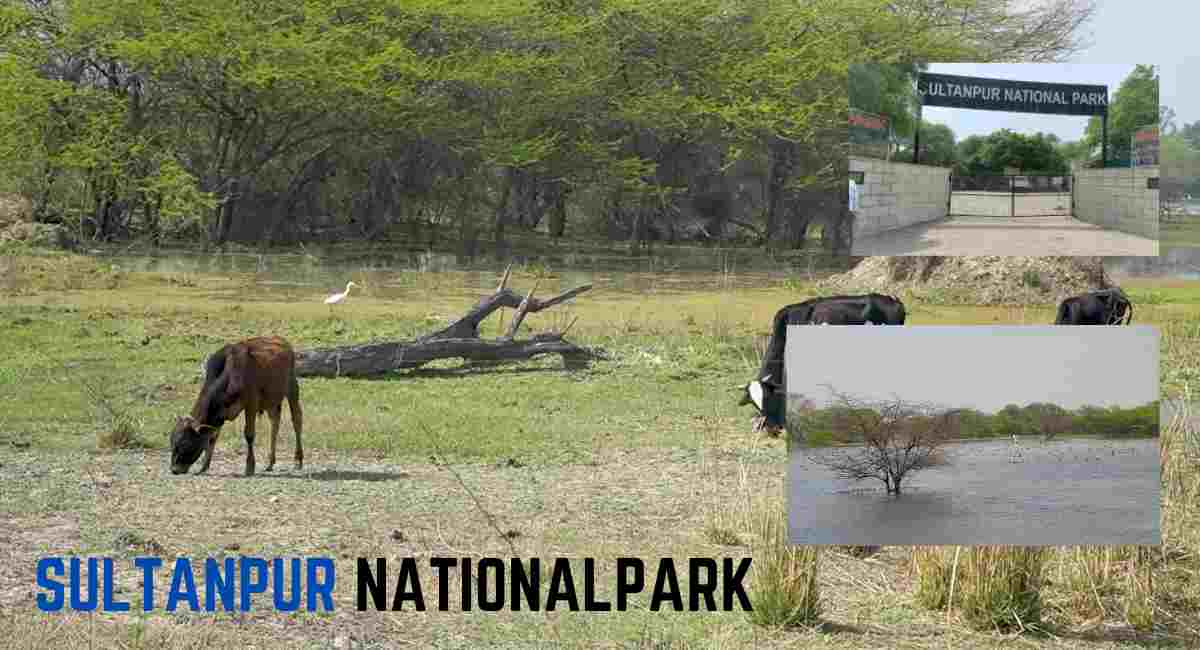Sultanpur National Park and Birds Sanctuary
Sultanpur National Park is located in Gurugaon city of Harayana, approximately 46 kilometers from Delhi and 15 kilometers from Gurugaon which is easily accessible for both the cities. It is a heaven for nature enthusiasts and birdwatchers. It’s a very popular place among the people for their holiday day trips. It is very liked places for photographers and nature lover.
Sultanpur National park covers a area of 1.43 square kilometers.

Facilities for Visitors
-
There is parking and toilet facilities for the tourists.
-
Educational Interpretation are setup for giving proper guidance to the tourists.
-
Tourist complex which has all modern facilities like restaurants and bar ,etc.
-
There are also facilities for picnicking and nature walks.
For Bird watchers
Bird watching is the primary activity in Sultanpur National park. These are some commonly sighted species in this park Painted Stork, Common Hoopoe, Purple Sunbird, and Black-winged Stilt.
Their are special 4 special towers(machans) in the different locations in the park for bird watchers. You get the amazing view of park from here and enjoy the peaceful environment.
History
Initially Sultanpur National park is created as a bird sanctuary in 1972, but later it is designated as National Park in 1991. It is established for conserving the rich biodiversity of the region, specialy for the avian species, particularly migratory birds.
Flaura and Fauna
This park is home of very large diverse range flora and fauna. Main attraction of this park is its bird population, with over 250 species. It features lush greenery, including grasslands, woodlands, and wetlands. In winters it became sanctuary for migratory birds.
Some Animal and birds species which are found in Sultanpur National park
Bird Species
and Scintific names
|
Animal Species
and Scintific names
|
-
Painted Stork (Mycteria leucocephala)
-
Common Hoopoe (Upupa epops)
-
Purple Sunbird (Cinnyris asiaticus)
-
Black-winged Stilt (Himantopus himantopus)
-
Indian Roller (Coracias benghalensis)
-
Eurasian Wigeon (Mareca penelope)
-
Northern Pintail (Anas acuta)
-
Common Teal (Anas crecca)
-
Black-headed Ibis (Threskiornis melanocephalus)
-
White-throated Kingfisher (Halcyon smyrnensis)
-
Great Egret (Ardea alba)
-
Indian Cormorant (Phalacrocorax fuscicollis)
-
Indian Pond Heron (Ardeola grayii)
-
Little Cormorant (Microcarbo niger)
-
Oriental Magpie-Robin (Copsychus saularis)
-
Eurasian Collared Dove (Streptopelia decaocto)
-
Black Drongo (Dicrurus macrocercus)
-
Spot-billed Duck (Anas poecilorhyncha)
-
Asian Pied Starling (Gracupica contra)
-
Common Myna (Acridotheres tristis)
-
Common Moorhen (Gallinula chloropus)
-
Greater Coucal (Centropus sinensis)
-
Common Coot (Fulica atra)
-
Rose-ringed Parakeet (Psittacula krameri)
-
Red-wattled Lapwing (Vanellus indicus)
|
-
Indian Gray Mongoose (Herpestes edwardsii)
-
Bengal Monitor (Varanus bengalensis)
-
Indian Hare (Lepus nigricollis)
-
Indian Porcupine (Hystrix indica)
-
Jungle Cat (Felis chaus)
-
Indian Palm Squirrel (Funambulus palmarum)
-
Indian Flying Fox (Pteropus giganteus)
-
Rhesus Macaque (Macaca mulatta)
-
Indian Peafowl (Pavo cristatus)
-
Indian Spotted Eagle (Clanga hastata)
-
Common Hawk-Cuckoo (Hierococcyx varius)
-
Indian Pitta (Pitta brachyura)
-
Alexandrine Parakeet (Psittacula eupatria)
-
Indian Robin (Copsychus fulicatus)
-
Yellow-footed Green Pigeon (Treron phoenicoptera)
-
Rufous Treepie (Dendrocitta vagabunda)
-
Red Avadavat (Amandava amandava)
-
Eurasian Marsh Harrier (Circus aeruginosus)
-
Greater Spotted Eagle (Clanga clanga)
-
Yellow-bellied Prinia (Prinia flaviventris)
|

FAQs
1.When was Sultanpur National Park established?
Initially Sultanpur National park is created as a bird sanctuary in 1972, but later it is designated as National Park in 1991.
2.Where is Sultanpur National Park located?
Sultanpur National Park is located in Gurugaon city of Harayana, approximately 46 kilometers from Delhi and 15 kilometers from Gurugaon
3.What is the main attraction of Sultanpur National Park?
Main attraction of this park is its bird population, with over 250 species.
4.When is the best time to visit Sultanpur National Park?
Best time to visit Sultanpur Ntional park is in winter season specialy in the monthe october to march.
5.What facilities are available at Sultanpur National Park?
-
There is parking and toilet facilities for the tourists.
-
Educational Interpretation are setup for giving proper guidance to the tourists.
-
Tourist complex which has all modern facilities like restaurants and bar ,etc.
-
There are also facilities for picnicking and nature walks.
If you are bird lover or studying on it then read this article on birds suicide mystery in jatinga





